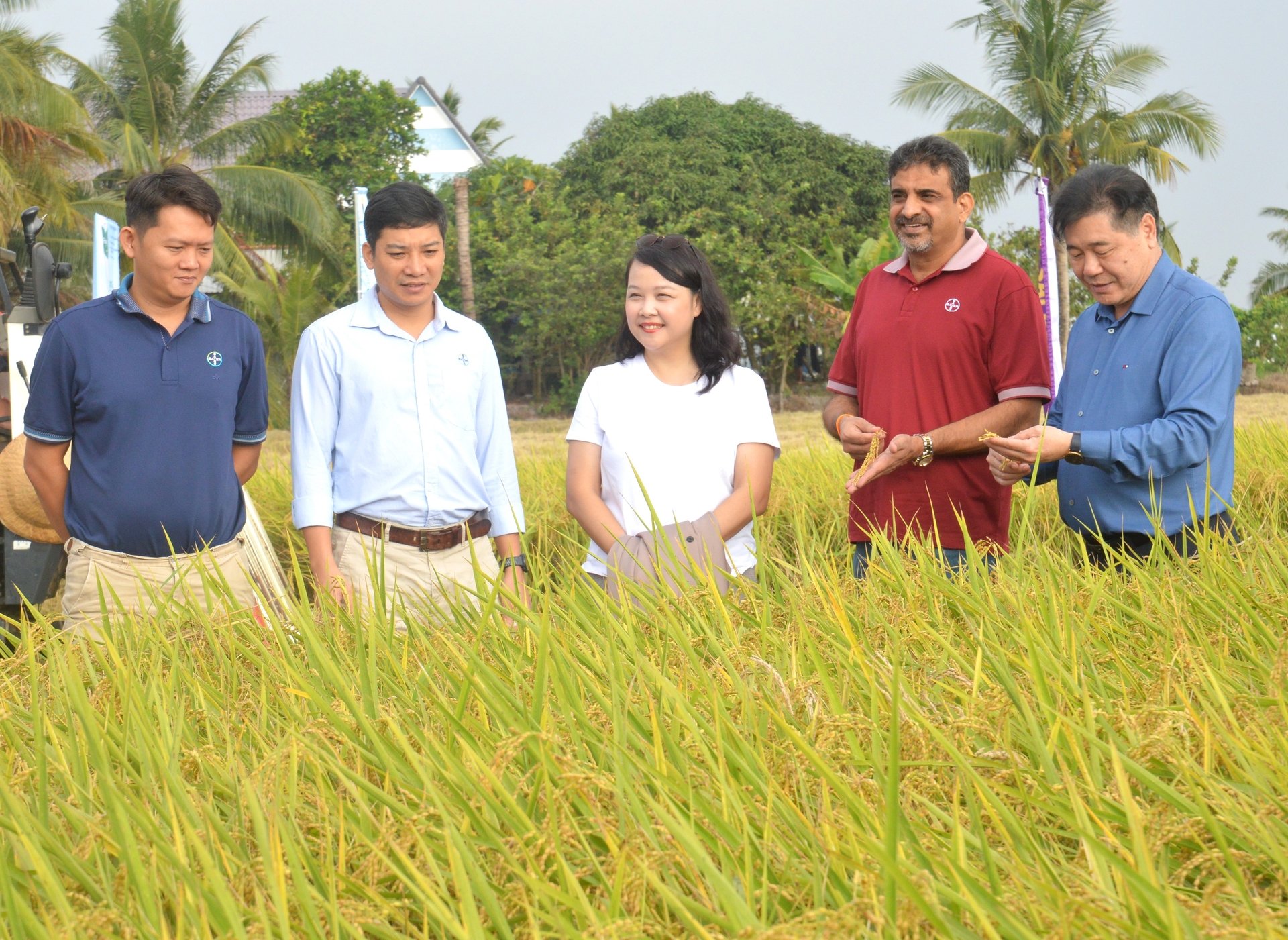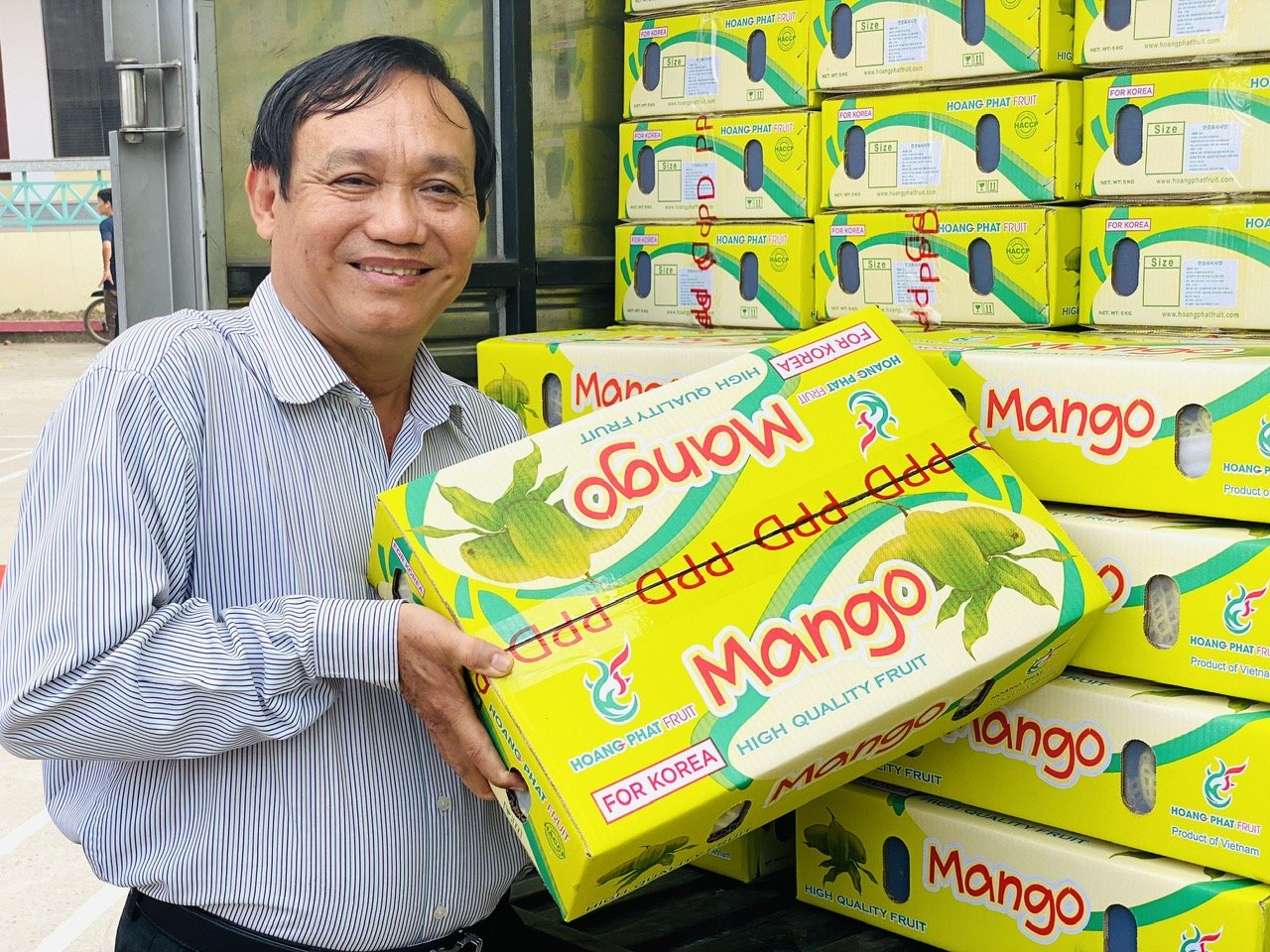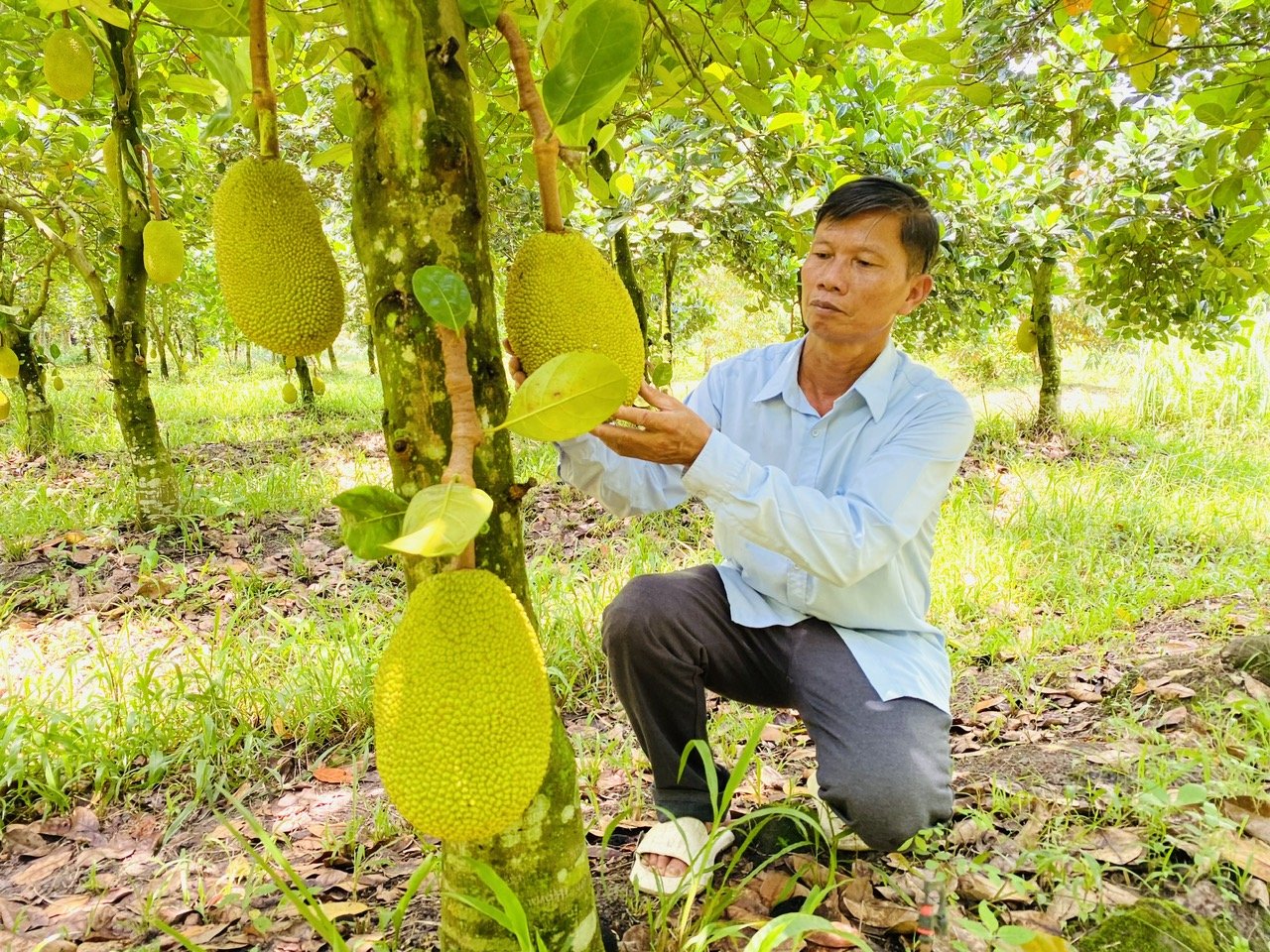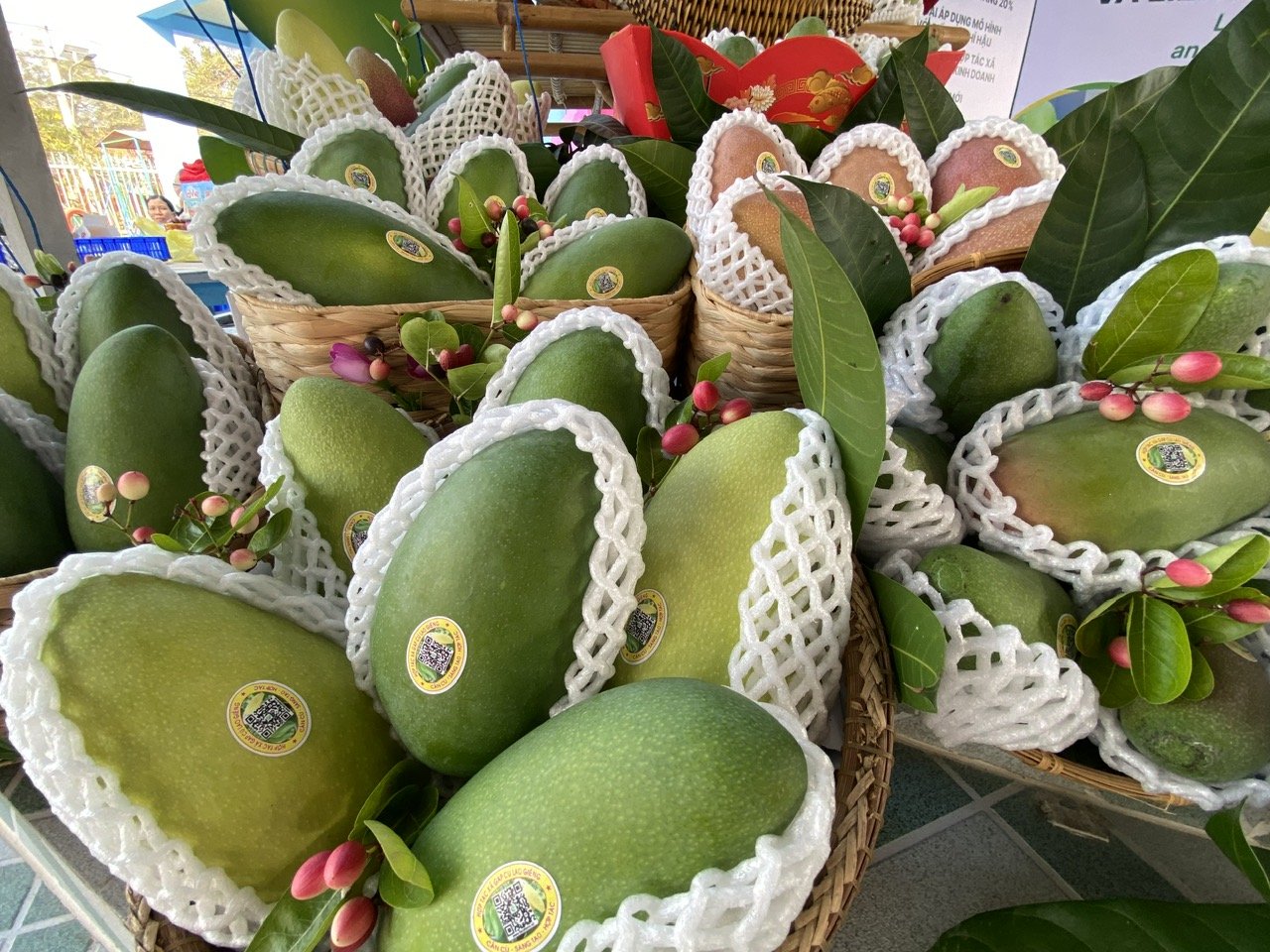November 21, 2025 | 08:44 GMT +7
November 21, 2025 | 08:44 GMT +7
Hotline: 0913.378.918
November 21, 2025 | 08:44 GMT +7
Hotline: 0913.378.918
The recent administrative consolidation has given An Giang province greater room for development, allowing it to leverage its strengths and capitalize on economies of scale to advance commodity agriculture and agri-food processing industries. The newly restructured An Giang now encompasses not only the vast Long Xuyen Quadrangle but also other ecological regions such as Tay Song Hau, U Minh Thuong, mountainous areas, and islands, providing favorable conditions for the diversified development of crops and livestock. With these advantages, An Giang has the potential to become a leading province in economic development within the Mekong Delta region, contributing to the goals of green growth and effective climate change adaptation.

An Giang holds a key position in the Mekong Delta's rice production chain. To date, the province has been assigned 744 planting area codes for rice cultivation, covering a total area of 36,031 hectares, aimed at serving export markets. Photo: Trung Chanh.
In the field of crop cultivation, in addition to its key crop of rice, with over 500,000 hectares planted per season and in many areas up to three crops per year, An Giang also grows a wide range of other high-value crops such as pineapple, coconut, banana, black pepper, durian, sweet potato, citrus fruits (such as orange, mandarin, and pomelo), vegetables, spices, and medicinal herbs.
According to Mr. Nguyen Van Hien, Head of the Crop Production and Plant Protection Sub-Department of An Giang, beyond providing technical training and supporting farmers in applying advanced techniques to improve the quality of agricultural products, the department sees the registration of planting area codes and packing facility codes as essential “passports” for agricultural products to access international markets transparently.
In the first week of July 2025, the sub-department issued 7 new planting area codes for export purposes, covering nearly 553 hectares concentrated in the communes of Cu Lao Gieng, Vinh An, and Binh My - specialized zones for mango and durian cultivation. These production areas target export to high-standard markets such as Australia, New Zealand, and South Korea.

An Giang has issued 496 planting area codes for fruit crops, covering a total area of over 9,600 hectares, including several types of fruit that are increasingly recognized for their quality in international markets. Photo: Le Hoang Vu.
In addition to focusing on exports, An Giang is also accelerating the issuance of planting area codes for domestic consumption. Over the past week, the province issued 19 new domestic codes, primarily for rice, watermelon, winter melon, and vegetables. Notably, 12 of these codes fall under the project for one million hectares of high-quality, low-emission rice, covering a total area of 1,820 hectares, contributing to the accelerated implementation of this initiative at the local level.
According to Mr. Nguyen Van Hien, the province has so far issued a cumulative total of 1,282 planting area codes for export, with rice accounting for 744 codes covering 36,031 hectares, reflecting An Giang’s key role in the Mekong Delta’s rice production chain. The fruit crop group follows with 496 codes across more than 9,600 hectares, including products like mango, durian, and longan, which are increasingly gaining recognition in international markets.
As for domestic market planting area codes, An Giang has issued 127 codes, covering 8,326 hectares in total. Among them, rice holds 95 codes over 7,841 hectares, fruit crops have 10 codes on 92 hectares, and vegetables, including chili, sweet potato, taro, ginger, and various types of melon, account for 35 codes covering nearly 603 hectares. Industrial crops such as black pepper and Rhodomyrtus tomentosa (rose myrtle) have 5 codes with a combined area of 66 hectares, while medicinal plants, specifically kaffir lime and honeysuckle, have 2 codes covering 2 hectares.

An Giang is committed to linking the issuance of planting area codes with standardized packing facilities, aiming to ensure effective traceability and create favorable conditions for agricultural products to reach international markets through a transparent pathway. Photo: Le Hoang Vu.
These figures not only reflect the efforts of An Giang’s agricultural sector in managing traceability but also represent a mandatory condition for local agricultural products to access key export markets such as China, the United States, the EU, South Korea, the UAE, Australia, and New Zealand.
At the same time, the Crop Production and Plant Protection Sub-Department of An Giang has supervised 100 planting area codes, covering an area of 1,074 hectares, to meet the inspection and on-site verification requirements of importing countries. The supervised products include mango, durian, and longan, serving markets in China, the United States, the EU, Russia, and the UAE.

The issuance of planting area codes must be synchronized, from cultivation areas and packing facilities to management and monitoring records, laying the foundation for a transparent agricultural system with full traceability down to each garden plot, rice field, mango, or grain of rice. Photo: Le Hoang Vu.
The planting area codes are linked with standardized packing facilities. During the week, the specialized unit conducted inspections at two mango packing facilities in Cho Moi district. The inspection results were sent to the province's Crop Production and Plant Protection Department and simultaneously notified to the importing country, China, to maintain the code for the next shipment.
According to professional assessments, planting area codes are not only a technical requirement for agricultural exports but also a key factor in quality management and protecting local brand reputation. This is not just an integration requirement but also a commitment to global consumers, laying the foundation for an ecological, transparent agricultural system with full traceability down to each rice field, mango tree, and grain of rice.
The issuance of planting area codes must be consistent and synchronized, from cultivation areas and packing facilities to management and monitoring records. Therefore, An Giang’s agricultural sector is strengthening training and guidance for farmers, cooperatives, and businesses on the procedures for code issuance, supervision, and maintenance according to the requirements of each market.
Translated by Phuong Linh

(VAN) A surge in Ukrainian egg exports, largely driven by soaring sales to the UK over the last few years, has notably pushed up egg prices on the domestic market.

(VAN) The price of Arabica Catimor coffee in Quang Tri is currently at VND 25,000–27,000/kg (fresh cherries), the highest level ever recorded

(VAN) 'From the coffee story, we can think deeper and further about the crop production sector - from development orientations and value-chain organization to international integration,' assessed Dr Le Quoc Doanh.
/2025/11/18/2431-0-161627_248.jpg)
(VAN) Viet Nam accounts for 43% of the world's export volume of Robusta coffee. However, the Vietnamese Robusta coffee brand has yet to gain broad recognition on the global market.
/2025/11/18/5617-2-125215_406.jpg)
(VAN) The consumption demand for premium, healthy, and cold-brew tea products is rising globally, including in the Thai market, opening new opportunities for Viet Nam.

(VAN) The 3F+ model aims for selective resource management, regenerative protection, green education and consumption, all intrinsic to Dabaco’s sustainable development strategy.

(VAN) Carefully packed tea bags, neatly arranged inside containers, begin their 5,000-kilometer journey to Afghanistan, carrying with them the aroma of mountain forests and the pride of Lai Chau province.